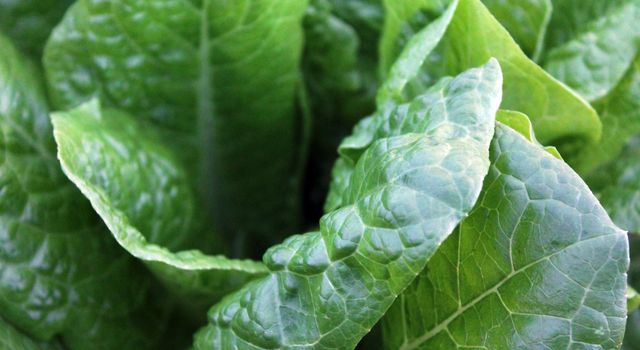Riboflavin, also known as vitamin B2, is found in dairy products and eggs, but also in grain germs, nuts, mushrooms and broccoli. We explain what it does in the body and what happens when there is a deficiency.
Vitamin B2 is better known by its name Riboflavin and serves its purpose not only as a vitamin in the body but also as a coloring agent in the food industry. As E101, vitamin B2/riboflavin turns food yellow. Because it glows faintly under UV light, it is added to some cleaning products to monitor cleaning (done or not). The vitamin is water-soluble and very sensitive to light, which is why foods rich in vitamin B2 should be stored away from light.
Functions of Vitamin B2 (Riboflavin)

Also called the “growth vitamin”, vitamin B2 or riboflavin (also: lactoflavin, vitamin G) plays a central role in growth and development. This applies not only to children, but also to adults, since, for example, skin and other tissue also have to be constantly reproduced in adults.
Vitamin B2 is converted into a coenzyme in the body and is indispensable in this form for numerous metabolic processes, such as protein metabolism and energy production. The functions of the vitamin at a glance are:
cell function
growth and development
component of enzymes
protein metabolism
energy metabolism
Metabolism of other B vitamins
What happens if there is a vitamin B2/riboflavin deficiency?
A pure vitamin B2 deficiency is extremely rare and usually only occurs in combination with other deficiency states. However, if a deficiency occurs, the causes are usually the use of certain medications (e.g. psychotropic drugs or chemotherapeutic drugs) or excessive alcohol abuse. In some cases, reduced absorption of riboflavin can also occur after surgery or damage to the digestive tract.
A riboflavin deficiency is particularly evident on the skin and mucous membranes. Symptoms of a vitamin B2 deficiency can be:
Inflammation of the oral mucosa and tongue
cracked corners of the mouth
scaly eczema
cracked skin
Skin inflammation and changes
anemia
Disorders of pyridoxine and niacin metabolism
It is being discussed whether an undersupply of vitamin B2 triggers migraines, because migraines can often be alleviated or even completely eliminated by an increased intake of riboflavin. Furthermore, it is suspected that a riboflavin deficiency could also be involved in the development of cataracts, since it is required for the production of a certain protein in the lens of the eye – however, the study results are controversial.
Side effect of overdose
The use of vitamin B2/riboflavin as a food coloring makes it clear that, according to the current state of knowledge, there is no risk of an overdose of the vitamin. Excess amounts taken in through food or vitamin supplements cannot be absorbed by the intestines and are excreted again through the urine. At the same time, this does not mean that you should take huge amounts of dietary supplements without medical supervision.
Daily requirement of riboflavin
The need for vitamins always depends on several factors. In the case of vitamin B2/riboflavin, this also depends on the energy supply because the vitamin is involved in many metabolic processes. In addition, the need differs according to age and gender.
A mean value recommended by the German Society for Nutrition (DGE) for adult women is 1 to 1.1 mg per day. Men and pregnant or breastfeeding women need a little more vitamin B2 at 1.3 to 1.4 mg per day. In Germany, however, the supply of vitamin B2/riboflavin is good because a balanced diet can also cover a higher requirement without additional vitamin supplements.
Which foods contain vitamin B2?
One of the other names of vitamin B2, lactoflavin, reveals which foods contain a particularly large amount of it: milk and milk products. Cheeses such as mountain cheese, Emmental and Camembert and eggs also contain vitamin B2. If you eat meat, you have to like offal in order to absorb high amounts of vitamin B2 with every bite, because the highest content is in the liver and kidneys. But sea fish is also a source to cover the vitamin requirement – although it is not always particularly sustainable (see Eating fish: You should definitely pay attention to this).
Vegans and vegetarians have the opportunity to meet their vitamin B2/riboflavin needs with cereal germs, especially wheat germ, nuts, mushrooms and legumes, especially soybeans. Wholemeal flour and bran of all types of grain also contain a lot of vitamin B2/riboflavin. Among the vegetables, broccoli, kale and spinach have relatively high amounts – those who follow a vegan diet should consume these vegetables in a targeted manner. Tip: Take a look at our seasonal calendar to find out when which vegetables are ripe.
Because vitamin B2/riboflavin is light-sensitive, whole grain products and other vitamin suppliers should be stored away from light as much as possible. The vitamin is not lost through heating, but through the cooking water, so you should either use or continue to use the cooking water or choose other cooking methods.
A large serving of whole-wheat pasta, accompanied by spinach, mushrooms, or broccoli and sprinkled with nuts or cheese, can be enough to meet your riboflavin needs in just one meal.
Vitamin B2 – what we recommend

With the daily consumption of whole grain products, you are already laying a good foundation for your supply of vitamin B2/riboflavin. Make sure you prepare food gently and use the cooking water to avoid vitamin loss.
If you eat vegan, make sure to regularly enrich your dishes with foods that contain a lot of vitamin B2/riboflavin. For example, how about some bran in your muesli or an extra portion of nuts in your vegetables?


Its like you learn my mind! You appear to understand a lot about this, like you wrote the e-book in it or something. I feel that you can do with a few to pressure the message home a little bit, but instead of that, that is wonderful blog. A great read. I will definitely be back.